The 30 Richest Neighborhoods in Chicago: Guide to the City’s Most Affluent Areas

Chicago stands as one of America’s most economically diverse cities, home to neighborhoods that represent vastly different income levels and lifestyles.
From the historic Gold Coast to emerging affluent areas, the city’s wealthiest enclaves showcase a blend of architectural grandeur, prime locations, and exclusive amenities that attract high-income residents.
Understanding which neighborhoods command the highest property values and household incomes provides valuable insight for potential homebuyers, investors, and anyone interested in Chicago’s real estate landscape.
These affluent areas span from lakefront communities with stunning skyline views to tree-lined suburban enclaves that offer luxury living within the city limits.
The wealth concentration in these neighborhoods reflects broader economic patterns and historical development trends that have shaped Chicago’s residential geography over decades.
Here are the 30 richest neighborhoods in Chicago:
1. Gold Coast
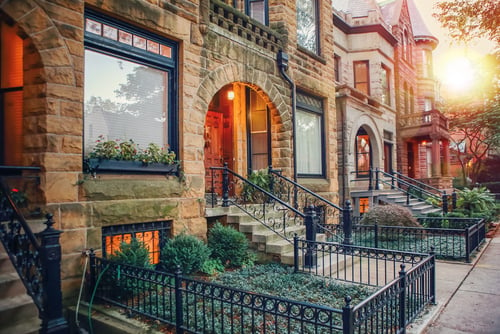
Gold Coast ranks as Chicago’s wealthiest neighborhood with a median household income of $111,800. The area sits on the Near North Side, close to downtown Chicago.
The neighborhood earned its prestigious reputation after the Great Chicago Fire. Potter Palmer developed the historic district in the 1880s, beginning with his 42-room Palmer Mansion.
Gold Coast features luxurious mansions and high-rise buildings. The area serves as a historic luxury shopping district that attracts affluent residents.
Recent median home prices in Gold Coast reach $548,000. The neighborhood blends historic charm with modern sophistication, making it highly sought-after among Chicago’s elite.
The area has maintained its status as a symbol of wealth and prestige for over a century.
2. Lincoln Park
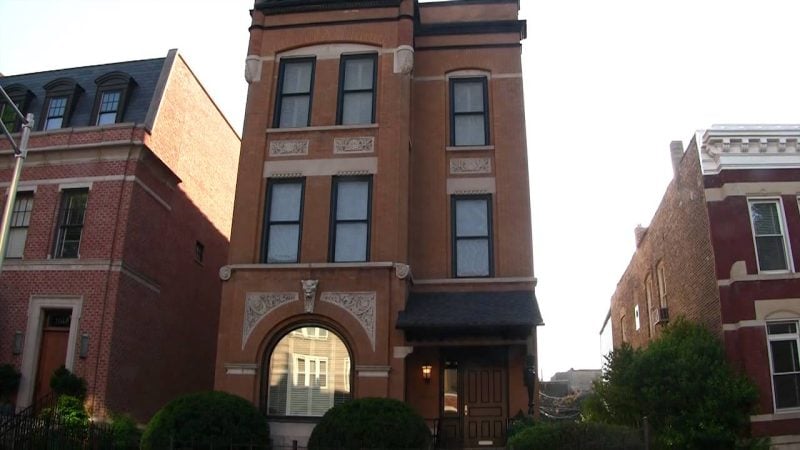
Lincoln Park ranks as one of Chicago’s most affluent neighborhoods with a median household income of $156,753. This places household incomes in the 96th percentile nationwide.
The neighborhood attracts wealthy residents, including millionaires and billionaires who have invested significantly in the area. One notable example includes a $22 million mansion spanning 7,200 square feet.
Recent median home prices in Lincoln Park reach $765,000. The area combines urban convenience with natural beauty through its proximity to Lake Michigan and expansive green spaces.
Education levels correlate strongly with the high incomes. About 85% of adults hold bachelor’s degrees or higher, compared to 31% nationwide.
The neighborhood houses approximately 72,391 residents. Lincoln Park offers abundant outdoor activities including jogging, biking, and picnicking in the iconic Lincoln Park itself.
3. Streeterville

Streeterville sits between the Chicago River and Lake Michigan, offering residents waterfront living in downtown Chicago. The neighborhood features high-rise condominiums and luxury apartments with stunning lake and city views.
The area attracts affluent professionals who value urban convenience. Many buildings offer premium amenities including doormen, fitness centers, and rooftop terraces.
Streeterville residents enjoy close proximity to Navy Pier, the Magnificent Mile, and numerous dining establishments. The neighborhood provides easy access to public transportation and major business districts.
The real estate market consists primarily of condominiums and rental properties. Prices reflect the desirable location and luxury amenities available throughout the area.
Shopping opportunities include high-end retailers and boutique stores. The neighborhood also features parks and recreational areas along the lakefront for outdoor activities.
4. Near North Side
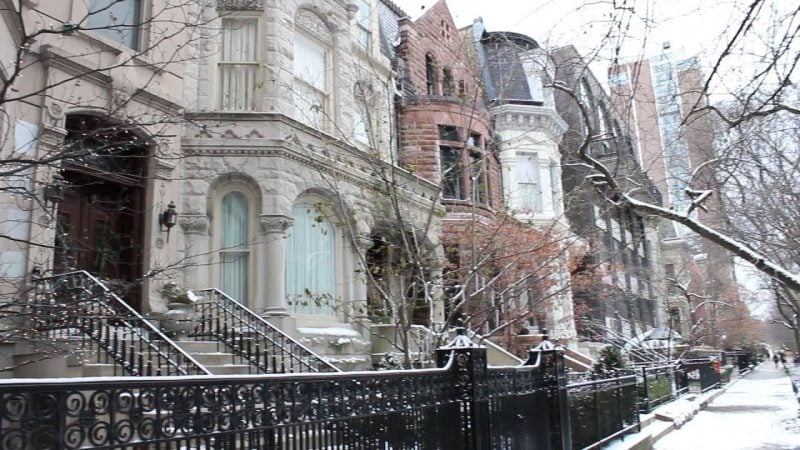
Near North Side stands as Chicago’s wealthiest and most prestigious area. The neighborhood encompasses the Gold Coast, Streeterville, and River North districts.
This area attracts Chicago’s elite with its stunning architecture. Historic mansions line the streets alongside luxury high-rise condominiums along Lakeshore Drive.
The neighborhood houses the famous Magnificent Mile on Michigan Avenue. This stretch features high-end retail stores, world-class restaurants, and luxury hotels that draw both residents and tourists.
Near North Side combines rich history with modern luxuries. The area includes iconic landmarks like the Wrigley Building and Tribune Tower.
Home prices in Near North Side significantly exceed Chicago’s average of $290,679. The neighborhood’s prime location near downtown Chicago makes it highly desirable for affluent residents seeking urban luxury living.
5. West Loop
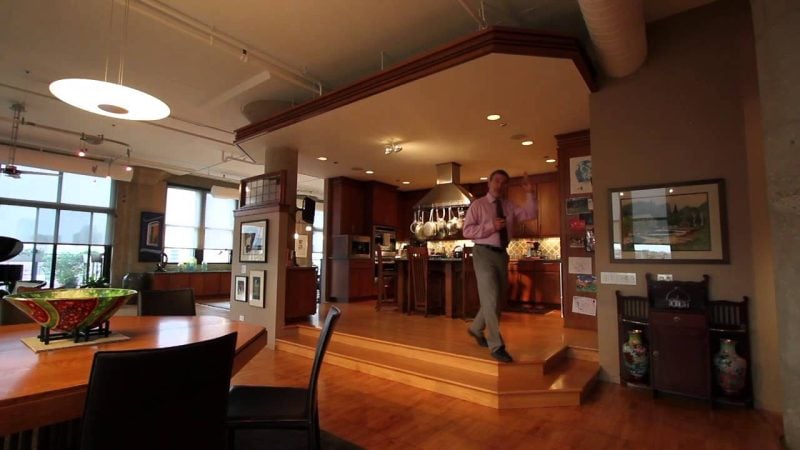
The West Loop has transformed from an industrial district into one of Chicago’s most desirable neighborhoods. Former warehouses and factories have been converted into luxury condos and upscale retail spaces.
The recent median home price in West Loop reaches $465,000. This reflects the neighborhood’s growing appeal among affluent residents seeking modern urban living.
Tech companies and startups have established headquarters in the area. This influx of high-paying jobs has attracted young professionals with substantial incomes.
The neighborhood features trendy restaurants, rooftop bars, and boutique shopping. Residents enjoy easy access to the Loop’s business district while living in a more residential setting.
West Loop’s proximity to downtown Chicago makes it attractive to executives and entrepreneurs. The combination of luxury amenities and convenient location continues to drive property values upward.
6. River North

River North stands as one of Chicago’s most vibrant and upscale neighborhoods. Located just north of the Loop and bordered by the Chicago River, this area attracts professionals and urban lifestyle enthusiasts.
The neighborhood boasts a recent median home price of $435,000. River North offers luxury condos alongside historic buildings and tree-lined streets.
The area serves as an epicenter of art and design. Creative professionals flock to River North for its proximity to numerous art galleries, museums, and historical architecture.
River North is renowned for its dynamic dining and nightlife scene. The neighborhood features upscale eateries, trendy nightclubs, and lively bars that make it one of Chicago’s most bustling areas after hours.
Wealthy residents choose River North for its combination of cultural attractions and exciting urban amenities. The neighborhood provides an ideal setting for those seeking sophisticated city living.
7. Bucktown
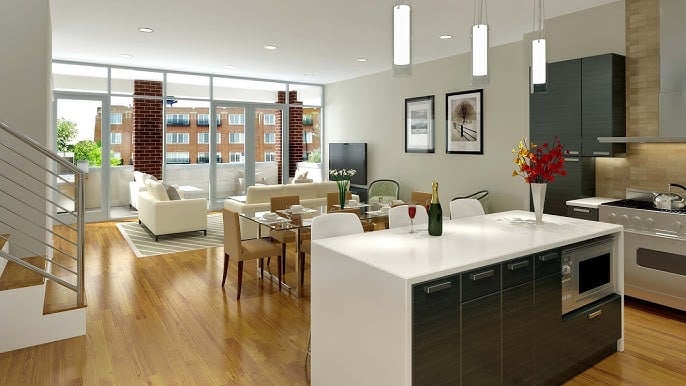
Bucktown has emerged as one of Chicago’s most dynamic and affluent neighborhoods. The area attracts young professionals and families seeking luxury living in a trendy environment.
The neighborhood features a robust real estate market with high-end properties. Investment opportunities in Bucktown continue to draw wealthy buyers looking for premium locations.
Bucktown offers trendsetting dining and entertainment options that appeal to affluent residents. The area’s multifaceted character combines residential luxury with commercial sophistication.
The neighborhood’s popularity stems from its blend of modern amenities and urban convenience. Bucktown residents enjoy access to upscale shopping, fine dining, and cultural attractions within walking distance.
Real estate professionals recognize Bucktown as a compelling investment opportunity. The area’s continued development and gentrification have elevated property values significantly over recent years.
8. Lakeview
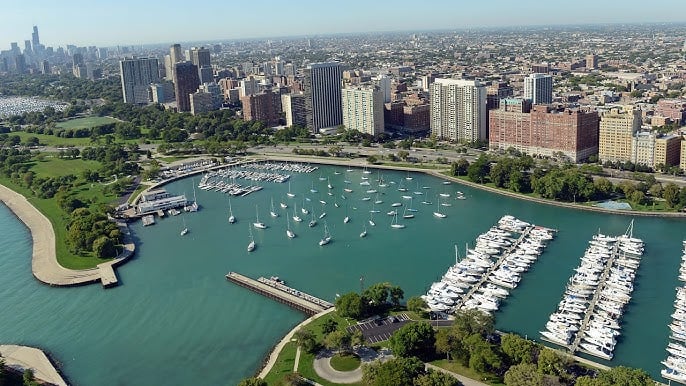
Lakeview stands as Chicago’s most populous community area on the North Side. The neighborhood attracts residents with its diverse housing options including two-flats, courtyard buildings, and single-family homes.
The area encompasses several well-known pocket neighborhoods. Wrigleyville draws baseball fans and entertainment seekers. Boystown holds the distinction of being the first official gay village in Chicago.
Property values in Lakeview reflect its desirability and central location. The neighborhood balances local charm with tourist attractions, creating a dynamic real estate market.
Transportation accessibility enhances Lakeview’s appeal to affluent residents. The public transportation system extends to Wrigley Field, connecting the area to downtown and surrounding neighborhoods.
Local amenities include boutique shops, coffee houses, and dining establishments. This combination of urban convenience and community atmosphere attracts professionals and families seeking quality living options in Chicago.
9. Logan Square
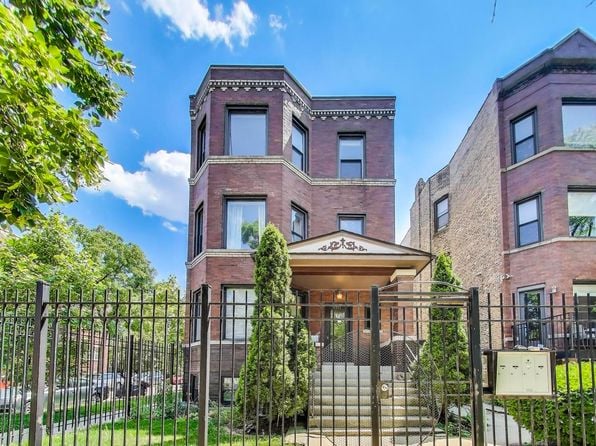
Logan Square has established itself as one of Chicago’s most desirable neighborhoods, with premium properties regularly exceeding $1 million. The median home price sits around $450,000, making it more expensive than Chicago’s city average of $290,679.
The neighborhood attracts buyers with its vibrant street art and colorful murals that create a dynamic atmosphere. Historic charm combined with modern amenities drives property values higher.
Time Out named Logan Square one of the “coolest” neighborhoods in the world, boosting its appeal among homebuyers. The area offers excellent schools and diverse housing options that cater to various income levels.
Logan Square’s creative community and cultural attractions continue to fuel real estate demand. The neighborhood’s artistic reputation and desirable location contribute to its status among Chicago’s wealthier areas.
10. Old Town
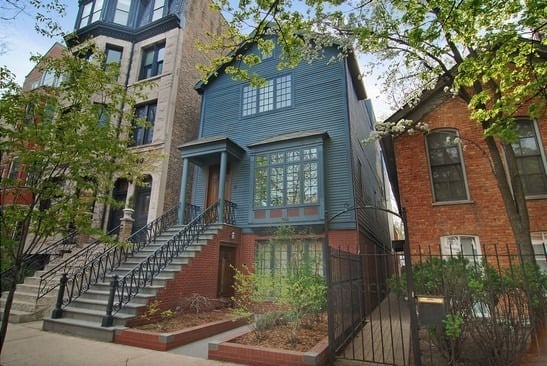
Old Town ranks among Chicago’s most charming and affluent neighborhoods. The area features a distinctive blend of historic Victorian homes and modern luxury residences.
Recent median home prices in Old Town reach $435,000. This pricing reflects the neighborhood’s desirable location and architectural character.
The neighborhood maintains its historic charm through well-preserved Victorian architecture. Many original buildings have been meticulously restored and updated with contemporary amenities.
Old Town’s proximity to downtown Chicago adds to its appeal. Residents enjoy easy access to the city’s business district while living in a quieter, more residential setting.
The area attracts professionals and families seeking upscale living. Tree-lined streets and historic character create an atmosphere distinct from other wealthy Chicago neighborhoods.
Local amenities include boutique shopping, fine dining establishments, and cultural attractions. The neighborhood’s walkability and historic preservation make it particularly desirable among Chicago’s affluent communities.
11. Hyde Park
Hyde Park ranks as the 33rd richest neighborhood in Chicago by median income, with residents earning $58,761 annually. The neighborhood sits on the South Side along Lake Michigan, approximately 7 miles south of the Loop.
The median real estate price in Hyde Park reaches $723,679. This makes it more expensive than 92.6% of neighborhoods in Illinois and 80.4% of neighborhoods nationwide.
Hyde Park has a notable history of affluence. During the 1930s and 1940s, the area housed Chicago’s most affluent Jewish community alongside neighboring Kenwood and South Shore.
The University of Chicago’s presence significantly influences the neighborhood’s character and property values. The historic core of Hyde Park lies between 53rd and 55th Streets, from Harper to Woodlawn Avenue.
Despite its wealth, Hyde Park shows lower median net worth compared to other South Side areas when measured against Chicago’s northern neighborhoods.
12. South Loop
The South Loop stretches along Lake Michigan’s shores and ranks among Chicago’s most desirable neighborhoods. This vibrant area offers residents spacious condos with panoramic views of the lake and city skyline.
The neighborhood provides easy access to world-class cultural attractions. The Field Museum, Shedd Aquarium, and Adler Planetarium are all located within the area.
South Loop combines urban convenience with scenic lakefront living. The proximity to downtown Chicago makes it attractive to professionals and families alike.
Property values in South Loop reflect its prime location and amenities. The area features modern high-rise buildings alongside historic architecture.
The neighborhood’s lakefront position provides residents with extensive recreational opportunities. Grant Park and the lakefront trail system offer outdoor activities year-round.
South Loop maintains its status as one of Chicago’s more affluent areas through its combination of location, amenities, and housing quality.
13. Edgewater
Edgewater sits along Lake Michigan’s shoreline on Chicago’s North Side. The neighborhood maintains a median household income of $65,731, placing it near the national average.
The area attracts residents with its lakefront location and urban amenities. Edgewater offers dense urban living with numerous bars, restaurants, coffee shops, and parks throughout the community.
Home prices in Edgewater align closely with Chicago’s average of $290,679. The neighborhood’s real estate market reflects steady demand from both homebuyers and investors.
Education levels run high in Edgewater, with 59% of adults holding bachelor’s degrees or higher. This compares favorably to the national average of 31%.
The community spans 8.9 miles from downtown Chicago’s Loop district. Most residents rent their homes rather than own, contributing to the neighborhood’s transient yet vibrant character.
Edgewater combines lakefront appeal with accessible urban conveniences, making it a sought-after location for young professionals and families.
14. Roscoe Village
Roscoe Village ranks among Chicago’s wealthiest neighborhoods, placing in the top 15% of highest income areas nationwide. The median resident age is 33, reflecting a community of young professionals and established families.
The neighborhood features tree-lined streets close to Lake Michigan and Wrigley Field. Its quiet, tucked-away location provides a village atmosphere within the city.
Average individual income reaches $81,551, with approximately 11,470 residents calling the area home. The most expensive streets include West Cornelia Avenue, West School Street, West Fletcher Street, and West Wellington Avenue.
Roscoe Village attracts families seeking quality housing and community amenities. The neighborhood offers less nightlife compared to other affluent areas, focusing instead on family-oriented activities and local events.
Property values continue rising as gentrification brings million-dollar homes to the area.
15. Uptown
Uptown sits along Chicago’s lakefront on the North Side, roughly four miles from downtown. The neighborhood stretches from Foster Avenue to Irving Park Road.
The area has undergone significant gentrification over the past two decades. Property values have risen steadily as new developments replaced older housing stock.
Uptown offers proximity to Lake Michigan and Lincoln Park. Residents enjoy easy access to the Red Line for downtown commuting.
The neighborhood features a mix of high-rise condominiums and vintage apartment buildings. Many properties offer lake views, which command premium prices.
Uptown’s entertainment district includes the historic Uptown Theatre and Green Mill Cocktail Lounge. These venues attract residents who value cultural amenities.
The median home price in Uptown typically ranges from $400,000 to $600,000. Luxury lakefront properties can exceed $1 million.
16. Wicker Park
Wicker Park ranks among Chicago’s most expensive neighborhoods with median home prices around $652,150. This represents a significant premium over the city’s average of $290,679.
The neighborhood attracts a creative and diverse community seeking vibrant urban living. Victorian-era buildings have been restored and converted into trendy boutiques, art galleries, and coffee shops.
Tree-lined streets feature renovated historic properties that blend luxury with neighborhood charm. The area maintains its eclectic appeal while offering high-end residential options.
Wicker Park’s cultural scene drives its desirability and property values. The neighborhood serves as a hub for creativity, nightlife, and individual expression throughout Chicago.
The namesake park provides green space for residents in this dense urban area. This combination of historic architecture, cultural amenities, and prime location contributes to the neighborhood’s premium housing market.
17. West Town
West Town ranks among Chicago’s wealthiest neighborhoods, securing a spot in the top ten richest areas of the city. The neighborhood attracts affluent residents with its blend of historic charm and modern amenities.
Home prices in West Town significantly exceed Chicago’s average of $290,679. The market analysis shows properties cost considerably more than the citywide median, reflecting the area’s desirability among buyers.
The neighborhood’s real estate market remains competitive due to high demand from professionals and families. West Town offers a mix of renovated historic buildings and contemporary developments that appeal to different lifestyle preferences.
Residents enjoy convenient access to downtown Chicago while living in a well-established community. The area provides numerous dining, shopping, and entertainment options that contribute to its appeal among higher-income households.
18. Andersonville
Andersonville stands as a charming North Side neighborhood within Chicago’s Edgewater community. This historically Swedish area has transformed into one of the city’s most desirable residential locations.
Home prices in Andersonville exceed Chicago’s average of $290,679. The neighborhood attracts buyers seeking quality of life and lower crime rates compared to other city areas.
The area maintains an almost small-town atmosphere within the bustling metropolis. Andersonville features numerous independently owned businesses, antique shops, and farm-to-table restaurants that contribute to its appeal.
The neighborhood has developed a strong reputation for supporting local enterprises. It also serves as a welcoming community for LGBTQ+ residents and hosts various inclusive events throughout the year.
Andersonville’s compact size allows residents to enjoy walkable streets and close-knit community bonds. The neighborhood consistently appears on lists of Chicago’s best places to live.
19. Bridgeport
Bridgeport sits on Chicago’s South Side with a median household income of $69,851. This places the neighborhood at the 54th percentile for household incomes nationally.
The neighborhood spans from 26th Street north to Pershing south, extending west to the river and east to Shields. Bridgeport maintains proximity to downtown Chicago and popular areas like Pilsen and Chinatown.
Home prices in Bridgeport remain above Chicago’s city average of $290,679. However, the area offers more affordable housing options compared to many other Chicago neighborhoods.
Education levels contribute to the area’s economic profile. About 40% of Bridgeport adults hold bachelor’s degrees or higher, exceeding the national average of 31%.
The neighborhood preserves its residential character while providing convenient access to the Loop and surrounding communities.
20. Chatham
Chatham represents a historically significant neighborhood on Chicago’s South Side. The area has deep roots in African American history and culture, contributing to its distinct character within the city.
The neighborhood shows educational achievement above national averages. About 32% of adults hold bachelor’s degrees or higher, compared to 31% nationwide.
Chatham’s median household income places it in the middle range among Chicago neighborhoods. Roughly 70% of city neighborhoods have higher median incomes, while 28% have lower incomes.
The area features unique architecture and local businesses that reflect its cultural heritage. Residents have access to various dining options, arts venues, and community gathering spaces.
Family and household incomes in Chatham tend to be higher than in nearby neighborhoods. This economic stability contributes to the area’s appeal for families seeking community connections.
The neighborhood offers a blend of residential charm and urban amenities while maintaining its distinct identity.
21. North Center
North Center ranks among Chicago’s wealthiest neighborhoods with a median home price of $676,060. This figure significantly exceeds the national median of $318,879.
The neighborhood transformed from its working-class origins as “Bricktown.” German farmers began developing the area after the Great Chicago Fire of 1871. Former brickyards and clay pits gave way to upscale residential development.
Located five miles north of the Loop, North Center borders the Chicago River. The area now features million-dollar homes throughout its boundaries.
Property values vary within the neighborhood itself. The northern sections command higher prices than southern areas. This variation reflects the neighborhood’s diverse housing stock and location preferences.
North Center’s evolution represents one of Chicago’s most dramatic neighborhood transformations. The area successfully transitioned from industrial use to luxury residential development.
22. Sauganash
Sauganash stands as one of Chicago’s most affluent neighborhoods with a median household income of $148,596. This places residents in the 95th percentile nationwide for household earnings.
The neighborhood sits on Chicago’s northern border within the Forest Glen community area. Originally developed in the early 20th century as a suburban retreat, Sauganash maintains its distinctive character through diagonal streets and spacious lawns.
Education levels contribute significantly to the area’s wealth. Approximately 61% of adults hold bachelor’s degrees or higher, nearly double the national average of 31%.
The community attracts high-earning professionals including city administrators, lawyers, judges, and upper-level police and fire officials. Tree-lined streets and architectural charm create a serene atmosphere that feels suburban while remaining accessible to downtown Chicago.
Sauganash home prices exceed Chicago’s average of $290,679 by a substantial margin, reflecting strong market demand for this desirable location.
23. Beverly
Beverly sits in Chicago’s Far South Side as a quiet, family-oriented community. The neighborhood maintains a residential atmosphere that attracts families seeking a peaceful environment within the city.
Known as the “village in the city,” Beverly features architecturally significant homes throughout its tree-lined streets. The area’s bucolic character sets it apart from many other Chicago neighborhoods.
Beverly ranks among Chicago’s wealthiest areas, though it remains relatively affordable compared to some other affluent neighborhoods. Home prices in Beverly exceed the city’s average of $290,679.
The neighborhood falls within the top 15% of highest income areas in America. Beverly’s combination of historic charm and strong property values makes it a desirable location for affluent residents.
The area’s quiet streets and established community feel continue to attract professionals and families looking for upscale living in Chicago’s southern region.
24. Oak Brook
Oak Brook sits west of Chicago as one of the most affluent suburban communities in the region. The area attracts wealthy residents with its combination of upscale amenities and convenient access to downtown Chicago.
The median home price in Oak Brook reaches approximately $800,000. Luxury properties and expansive estates frequently sell for over $3 million, with some reaching even higher price points.
The community maintains a median household income exceeding $150,000. This wealth concentration has earned Oak Brook recognition on Bloomberg’s list of America’s 100 wealthiest places.
Oak Brook serves as a major commerce hub, housing headquarters for numerous corporations. The suburb features upscale shopping centers, luxury hotels, and high-end dining establishments that cater to its affluent population.
25. Wilmette
Wilmette stands as one of Chicago’s most affluent northern suburbs, consistently ranking among the wealthiest communities in America. The village features tree-lined streets and well-maintained properties that reflect its high median household income.
Located along Lake Michigan’s shoreline, Wilmette offers residents direct access to beaches and waterfront recreation. The community maintains a strong connection to the lake through parks and public spaces.
The village attracts professionals who value both luxury living and convenient commuting options to downtown Chicago. Wilmette’s proximity to transportation makes it popular among high-earning residents.
Housing prices in Wilmette reflect the area’s desirability and economic status. The real estate market consists primarily of upscale single-family homes and luxury properties.
Wilmette’s economic strength stems from its educated population and strategic location. The community has maintained its reputation as a premier destination for wealthy Chicago-area residents.
26. Edison Park
Edison Park ranks among Chicago’s most affluent neighborhoods with a population of approximately 12,658 residents. The area consistently appears on lists of the city’s richest communities.
Located in northwest Chicago about 13 miles from the Loop, Edison Park offers a suburban feel within the city limits. The neighborhood maintains higher income levels than Chicago proper.
Housing prices typically range from $200,000 for two-bedroom condos to between $300,000 and $600,000 for most homes. Larger historic properties command higher prices.
The area provides a quiet residential environment while maintaining connections to Chicago’s urban amenities. Edison Park North specifically ranks among the top 15% of highest income neighborhoods in America.
This neighborhood attracts residents seeking an upscale community with a more relaxed atmosphere compared to downtown Chicago.
27. Lincoln Square
Lincoln Square ranks among Chicago’s wealthiest neighborhoods, positioned on the North Side of the city. This larger district encompasses several smaller communities including Ravenswood, Budlong Woods, and Bowmanville.
The neighborhood sits between Lawrence and Montrose avenues. Lincoln Square has maintained its reputation as a select residential area for over a century.
The area features well-preserved real estate and classic architecture throughout its boundaries. Tree-lined residential streets create a serene atmosphere that attracts affluent residents.
Lincoln Square is often described as a place where Old World charm meets modern amenities. The neighborhood’s historic buildings and architectural details contribute to its desirable character.
The community offers a blend of suburban feel within the urban setting of Chicago. This combination makes Lincoln Square particularly appealing to families seeking both luxury and convenience.
28. Forest Glen
Forest Glen ranks among Chicago’s wealthiest neighborhoods with an average household income of $123,850 per year. Located on the city’s Northwest Side near highways 90 and 94, this community houses approximately 19,405 residents.
The neighborhood features brick bungalows, cottages, and English Tudor homes. Many properties include yards bordered by forest preserves and the North Branch of the Chicago River.
Forest Glen residents enjoy both suburban tranquility and urban convenience. The area maintains a reputation as one of Chicago’s safest neighborhoods.
Home prices in Forest Glen exceed Chicago’s average of $290,679. The neighborhood’s desirable location and quality housing stock contribute to its strong real estate market.
29. Mount Greenwood
Mount Greenwood sits 14 miles southwest of downtown Chicago, offering suburban living within city limits. The neighborhood has a median household income of $92,900, placing it among Chicago’s wealthier communities.
This Southwest Side neighborhood attracts families seeking quality schools and outdoor space. Mount Greenwood provides a more affordable alternative to other affluent Chicago areas while maintaining desirable amenities.
The area features a strong mix of local businesses, shops, and restaurants that serve its 18,628 residents. Educational attainment runs higher than national averages, with 35% of adults holding bachelor’s degrees or higher.
Mount Greenwood’s location provides convenient access to both city amenities and suburban comforts. The neighborhood’s family-friendly atmosphere and quality housing options make it a popular choice for those seeking affluent living on Chicago’s South Side.
30. Glenview
Glenview ranks as one of Chicago’s most desirable northern suburbs. The village sits in the North Shore region, approximately 22 miles from downtown Chicago.
The community boasts median home values significantly above the national average. Most properties range from $400,000 to over $1 million, with luxury estates commanding higher prices.
Glenview’s appeal stems from its excellent public schools and low crime rates. The area features tree-lined streets and well-maintained neighborhoods that attract affluent families.
The Glen shopping district anchors the local economy. Residents enjoy access to upscale retail, dining, and entertainment options within walking distance.
Transportation links include nearby highways and Metra train service. The suburb provides easy access to Chicago while maintaining its quiet residential character.
What Defines a Wealthy Neighborhood in Chicago?
Wealthy Chicago neighborhoods distinguish themselves through three primary factors: elevated property values, specific demographic characteristics, and premium amenities. These elements work together to create exclusive enclaves that attract affluent residents.
Median Home Values
Property values serve as the most direct indicator of neighborhood wealth in Chicago. The Gold Coast leads with median home prices reaching $548,000, while other affluent areas like Lincoln Park feature luxury properties exceeding $22 million.
High-Value Price Ranges:
- Gold Coast: $548,000 median
- Lincoln Park: $400,000-$22 million+
- Edison Park: $350,000-$500,000
- North Center: $375,000-$600,000
Wealthy neighborhoods maintain consistent property appreciation rates. These areas demonstrate resilience during market downturns and often outperform citywide averages.
Premium locations command higher prices due to proximity to Lake Michigan, downtown accessibility, and historical significance. Properties in these neighborhoods typically feature architectural details, larger square footage, and updated amenities that justify elevated costs.
Demographic Trends
Affluent Chicago neighborhoods exhibit distinct demographic patterns that reflect economic prosperity. Edison Park holds the highest median household income among wealthy areas, while the Gold Coast maintains a median household income of $111,800.
Key Demographic Indicators:
- Higher education levels (college degrees)
- Professional occupations
- Dual-income households
- Lower unemployment rates
These neighborhoods attract professionals in finance, healthcare, law, and technology sectors. Residents typically work in downtown Chicago or nearby business districts.
Age demographics skew toward established professionals and empty nesters. Young professionals often begin in areas like West Town or Lincoln Square before moving to more exclusive neighborhoods as their careers advance.
Local Amenities and Lifestyle
Wealthy Chicago neighborhoods provide exceptional amenities that enhance quality of life. These areas feature proximity to Lake Michigan, premium shopping districts, and diverse dining options that cater to affluent residents.
Premium Amenities Include:
- Historic luxury shopping districts
- Top-rated public and private schools
- Cultural institutions and museums
- Upscale restaurants and entertainment venues
Transportation access remains crucial, with many affluent neighborhoods offering convenient access to downtown Chicago. Walking distances to amenities create desirable urban living experiences.
These neighborhoods maintain well-preserved architecture and green spaces. Parks, tree-lined streets, and historic buildings contribute to the overall appeal and property values that define Chicago’s wealthiest residential areas.
Historical Context of Affluent Areas
Chicago’s wealthy neighborhoods emerged through distinct patterns of urban development and architectural evolution. The transformation from working-class districts to affluent enclaves reflects broader economic shifts and design movements that shaped the city’s landscape.
Evolution of Chicago’s Wealthy Districts
The Great Chicago Fire of 1871 marked a pivotal moment in the city’s wealthy district development. Elite residents relocated northward to escape the devastation, establishing new centers of affluence away from the industrial core.
During the 1950s, neighborhoods like Lincoln Park consisted primarily of working-class residents. Post-World War II suburban migration initially drew wealth away from the city center. However, urban renewal projects beginning in the 1960s transformed these areas into desirable locations for affluent residents.
Key transformation periods:
- 1870s-1890s: Post-fire reconstruction and northward migration
- 1920s-1940s: Established wealthy enclaves solidify
- 1960s-1980s: Urban renewal and gentrification waves
- 1990s-present: Continued investment and neighborhood consolidation
The Gold Coast emerged as Chicago’s premier wealthy district by the 1880s. Lake Shore Drive became synonymous with luxury living, attracting industrialists and business magnates.
Lincoln Park’s transformation exemplifies Chicago’s gentrification patterns. The neighborhood shifted from working-class housing to one of the city’s most expensive areas through systematic urban renewal initiatives.
Architectural Styles and Influences
Chicago’s wealthy neighborhoods showcase distinct architectural movements that reflect different eras of prosperity. The city’s affluent areas feature styles ranging from Gilded Age mansions to contemporary luxury developments.
Dominant architectural styles:
- Prairie School: Frank Lloyd Wright’s influence on residential design
- Beaux-Arts: Grand mansions reflecting European classical traditions
- Art Deco: 1920s luxury high-rises and apartment buildings
- Modern/Contemporary: Glass towers and minimalist designs
The Gold Coast features predominantly Beaux-Arts and Georgian Revival mansions from the early 1900s. These structures demonstrate the wealth accumulated during Chicago’s industrial boom period.
Lincoln Park combines historic brownstones with modern luxury developments. Victorian-era row houses stand alongside contemporary glass condominiums, creating architectural diversity within affluent blocks.
River North’s warehouse district transformation introduced loft-style luxury living. The conversion of industrial buildings into high-end residences became a model for urban redevelopment in wealthy neighborhoods.





